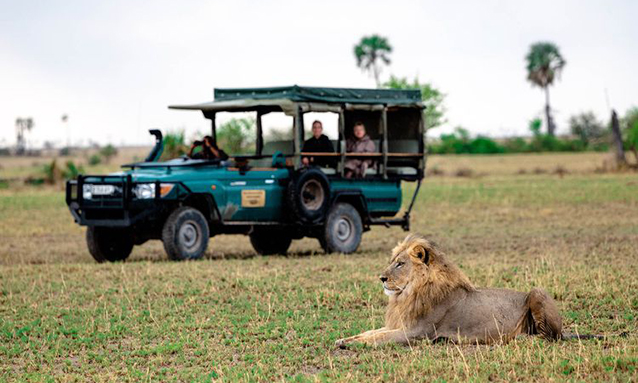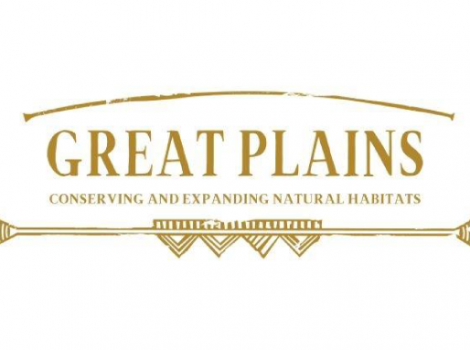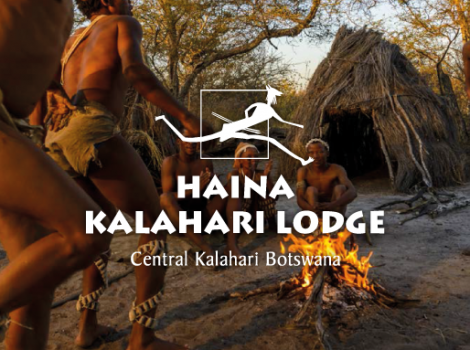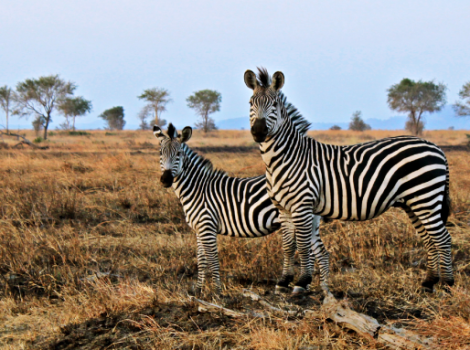
6 June 2023
A beginner’s guide to safari vacations in Botswana
An African safari ranks high on the wish list of many a world traveller. Of the millions of adventurers who make the trek here annually, the (ahem) lion’s share will end up in the game reserves of Kenya, South Africa, and Tanzania — enduringly popular destinations for wildlife viewing in Africa. But in recent years, Botswana has been nipping at the heels of those countries.
Botswana is home to diverse landscapes that span delta to desert, and the local culture is vibrant and inviting. The Botswana bush is teeming with majestic fauna, including Africa’s largest population of elephants — they are protected by a government focused on conservation, and tour operators committed to the same. And a safari here means you get to enjoy all of the above with far fewer humans than in its aforementioned continental counterparts.
“Botswana is an anomaly in Africa,” said Ian Proctor, president and managing director of Ultimate Africa Safaris. It is considered one of the safest and most stable democracies on the continent.”
Proctor has been preparing customised itineraries for safari-going clients since 1996, and during that time, he estimates he’s personally enjoyed more than 250 experiences across the African continent. Botswana has become his go-to destination, and in no small part because of the modernisation of its government.
“Citizens receive free universal health care, and LGBTQ+ communities are legally recognized,” he cited as examples. And with a very small population, its wilderness areas are unparalleled — and, importantly, uncrowded.”
Ready to pack your bags? Here’s how to plan your Botswana safari, along with insight from experts on what you can expect along the way.
How to Get to Botswana
The most common way to get to the Botswana bush is by way of Safarilink flights out of Maun National Airport (MUB), in the northwestern part of the country. Midsized runways here can’t accommodate jumbo jets, so you won’t find direct service from the U.S. That’s a blessing in disguise, though. The added stop you’ll need — in either Johannesburg or Cape Town — weeds out those tourists who aren’t willing to brave nearly 16 hours of total flight time.
Really, it’s not nearly as arduous as it seems. American carriers now offer multiple direct options per day into South Africa from New York and Atlanta. And if you work with an outfitter like Ultimate Africa Safaris, you can bookend your safari with well-curated layovers in those connecting cities.
Best Times to Go to Botswana
Weather-wise, Botswana is at its most inviting from early May through the end of September. Temperatures are more moderate during these winter months, and malaria is less prevalent. Things start to get somewhat wet come mid-October, but if birding is your thing, the rainy season is precisely when you want to arrive. The Nata Bird Sanctuary along the northeastern edge of the massive Makgadikgadi Salt Pans is the world’s largest breeding ground for Lesser and Greater Flamingo. This ancient, Switzerland-sized lakebed is a shrimp-infested food source for the birds, which pass through by the hundreds of thousands from November through March.
Best Places to Stay
When it comes to world-class safari camps, this part of Africa is chockablock with options. They run the gamut from rugged to ultra-luxe and are scattered across every corner of the country’s dynamic terrain. You’ll want to allot ample time to explore the Okavango Delta. This massive marshland in northern Botswana boasts a footprint of nearly 8,000 square miles and is regarded as one of the Seven Natural Wonders of Africa. From there, you can transfer by bush plane to the outskirts of the Kalahari Desert to enjoy a wholly different landscape.
“Botswana dedicates so much space for wildlife — we are actually in the top 10% in the world for wildlife conservation,” said Super Sande, a native of Botswana who has been a guide in the country for 32 years.
“Between the wet and dry parts of our country, the diversity of game that you see is like nowhere else. You can be surrounded by thousands of zebra and wildebeest and be the only car there. It’s so special.”
Logistically, it’s easiest to take all of these wonders in by booking an all-inclusive package with a tour operator. One such example is Natural Selection’s “Botswana Explorer” package, which covers multitudes of terrain over 10 days, including an overnight on a Delta houseboat and luxe stays in private game reserves. The programme starts at $8,235 per person, which includes a guide, transfers, and meals along the way.
As for individual standouts, Jack’s Camp is king of the desert. The legendary outpost along the edge of the salt pan underwent a full rebuild in 2021, and it now boasts rooms with private plunge pools and bedside air conditioning. Its common area is the aesthetic equivalent of stepping into the late 19th century, anchored by a Persian tea tent and a full bar with a comprehensive collection of cultural artefacts. Prices at the year-round lodge range from $1,450 to $2,495 per night, depending on room size and time of year.
In the Delta, a similar level of luxury can be found at Tuludi. The seven-room property sits on the Khwai Private Reserve — 772 square miles of floodplain awash with wildlife. Suites feature outdoor baths and plunge pools. Don’t be surprised if you’re visited in the evening hours by the local herd of elephants who enjoy feeding on foliage here once the sun has set.
Later this year, Tawana Camp will become the newest option in the Okavango, and the only camp located within the protected Moremi Game Reserve. This exclusivity is owed to a first-of-its-kind partnership between Natural Selection and the Batawana tribe – who have stewarded the land since the late 18th century (the camp takes its name from the nation’s current ruler). It will feature all the trappings of five-star living, including butler service and its own gym. The whole camp is positioned alongside a gently rolling river crowded with hippos, lions, and zebra.
What You’ll See in Botswana
If you stay on a riverfront camp such as Duke’s, you can head out into the water on traditional canoe-like vessels known as mokoro, and from this vantage point, you’ll spy African fish eagles and saddle-billed storks along the shore. You’ll also likely paddle past hippos, whose eyes hover menacingly just above the waterline. Back on dry land, lions prowl in outsized prides, leopards carry slain impala into the trees, and baboons scamper across the plains by the dozen.
Elephant fans will want to book a stay at Hyena Pan, hidden among the thick mopane forests of Khwai Private Reserve. A short game drive brings you to a repurposed shipping container abutting a watering hole. This is the Elephant Hide, and it affords an intimate spectacle of the largest living land animal, which congregate just a few inches from a narrow viewing slot fashioned into the side of a steel wall.
In the salt pan, you can marvel at colourful creatures of all shapes, sizes, and speeds. The edge of the ancient lakebed is inundated with meerkats, Cape hares, aardwolves, hyenas, and cheetahs, to name but a small cross section of species.
“I see the most interesting things here at night, especially,” Sande said. I just recently saw two honey badgers fighting off some jackals. No two game drives are ever the same.”
A lot of a safari experience depends on good fortune, of course. But luck is what happens when preparation meets opportunity, and the difference between a good guide and a great guide is careful planning, according to Kagisano Bapute, who steers guests toward unforgettable game viewing in and around Tuludi Camp.
“You have to stay up to date with everything going on from day to day, and from season to season,” Bapute added. You’re always checking in with a network of trackers, and you have to be working around the clock, so you’re not just going out there blindly once you have guests with you.”
What You’ll Eat and Drink
While staying at any high-end safari camp, you can expect robust meals that rotate regularly, often featuring staples of Western cuisine. At Tuludi, for example, elegant pasta dishes are mainstays on the menu. Sable Alley has its own pizza station.
While it’s easy to gravitate toward the familiar — and there are certainly some great hamburgers to be enjoyed in the bush — if you’ve come all this way, do as the locals do and save room for seswaa. The flavourful beef stew is frequently served for supper along with local bread, phapatha. Vegetarians can keep an eye out for morogo, a spinach dish studded with onions and tomatoes.
When it comes to cocktails, gin is king here, and Okavango even has its very own. The award-winning eponymous offering is distilled with local botanicals, including the mopane seed. At Sable Alley, the bar staff is working it into the Bluebird: two parts gin, one part blue curaçao, and a splash of simple syrup, garnished with a slice of lemon.
Alternatively, book a stay at San Camp and you’ll drive into the heart of the Kalahari for cocktail hour. A makeshift bar is set up atop the pale, crusted earth, just in time for sunset. Once it gets dark, a multi-course feast is prepared by campfire, with nary another soul in sight. For dessert, gaze up at the most dazzling star-scape you’ll ever see.
Source: https://www.travelandleisure.com/how-to-take-a-botswana-safari-7508883



